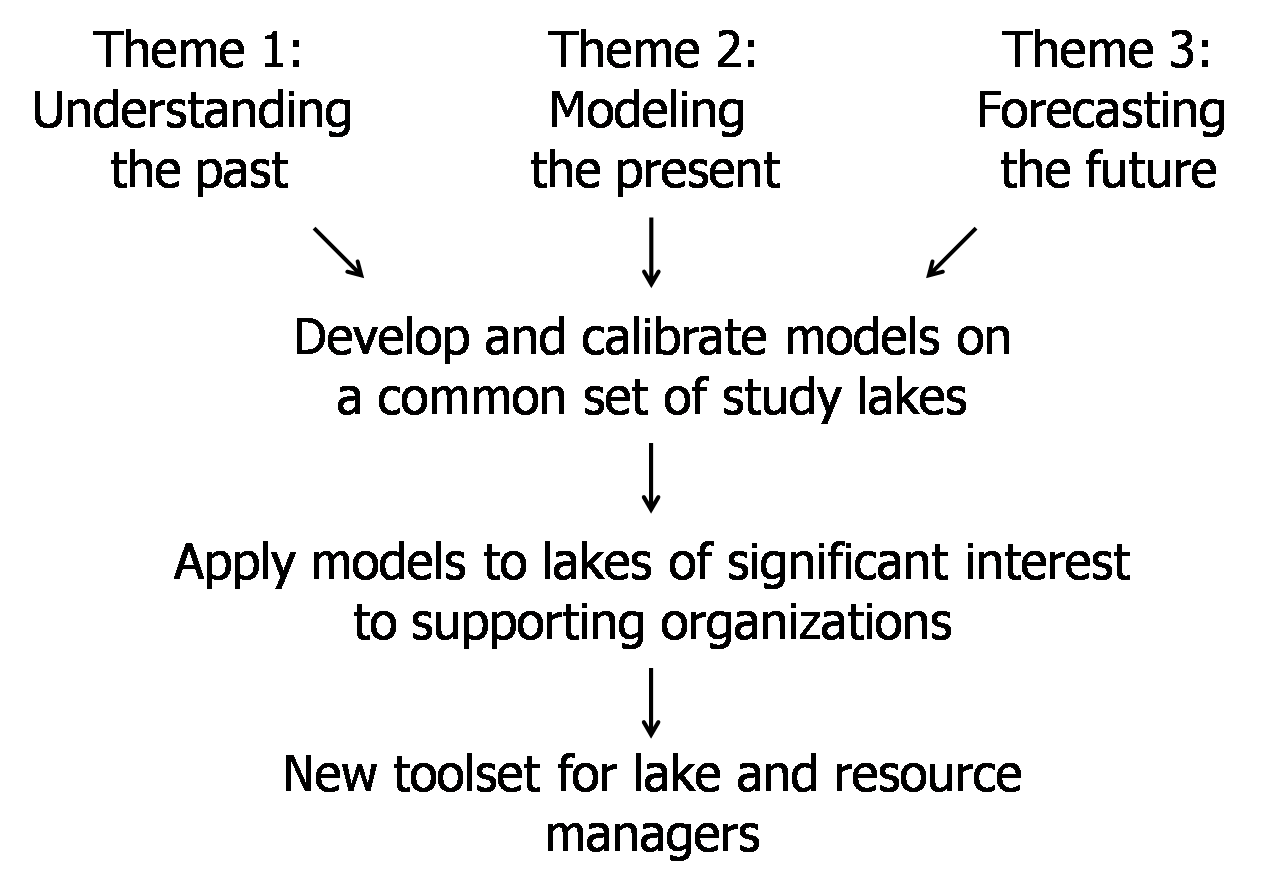The purpose of this project is to develop new predictive tools for forecasting the impact of climate change and other anthropogenic activities on hypolimnetic dissolved oxygen concentrations ([DO]) in Ontario lake trout lakes. These state-of-the-art models will enable resource managers to regulate the long-term sustainable use of these lakes in a multiple-stressor context, without impairing the ecosystem services (cold water fishery, drinking water, tourism and recreation) they provide. Although our focus is on Ontario lakes, the products of our research will provide a foundation for the application of similar approaches in other regions.
Theme 1: Understanding the past (Lead: J. Smol)
- Provide lake managers with detailed paleolimnological reconstructions of hypolimnetic [DO], TP, lake production, DOC, and climate variables for the strategically selected study lakes.
- The paleoenvironmental data will be used by the project's modelers to validate broad-scale environmental drivers of historic [DO].
- Compare the relationships between [DO] and its drivers in the paleo data sets with those from both empirical and computational lake models.
Theme 2: Modeling the present (Lead: L. Molot)
- Develop a new empirical [DO] model using 1999-2010 data for central Ontario lakes.
- Include lake [DOC] as an independent variable (in addition to TP) in the empirical model.
- Transform predictions of end-of-summer [DO] profiles into volume-weighted hypolimnetic DO for comparison with paleo reconstructions and dynamic model predictions from recent years.
- Apply the revised model to several inland lakes at high risk of cyanobacteria blooms.
Theme 3: Forecasting the future (Lead: L. Boegman)
- Develop A 1D (vertical) model to simulate physics and biogeochemistry over timescales relevant to future climate change.
- Validate model predictions against historical lakewater observations ("A" lakes) and paleolimnological data.
- Transfer technology to Environment Canada who have already embedded the 1D hydrodynamic submodel within their Canadian Land Surface Scheme, General and Regional Climate Models (GCMs) and Numerical Weather Prediction models.
- Couple the 1D hydrodynamic Environment Canada model to the biogeochemistry algorithms from DYRESM-WQ and develop the coupled model for a Canadian setting that incorporates ice cover and is fully coupled to the Environment Canada weather and climate prediction models.
- Develop an empirical sediment oxygen demand (SOD) model, for the new dynamic 1D model, from the paleolimnological data time-history of organic matter accumulation in the sediments and reconstructed [DO].
- Calibrate and validate the dynamic model simulations against the 35 year DESC "A" lake data set. The simulated data will be of higher space-time resolution than the "A" lake data, and so will be used to aid development of the empirical model.
- Couple the dynamic model to Environment Canada GCM hindcasts to simulate broad-scale modeled trends during past climatologies (e.g., pre-industrial ~1850 AD) and compare the results with the paleoenvironmental data.
